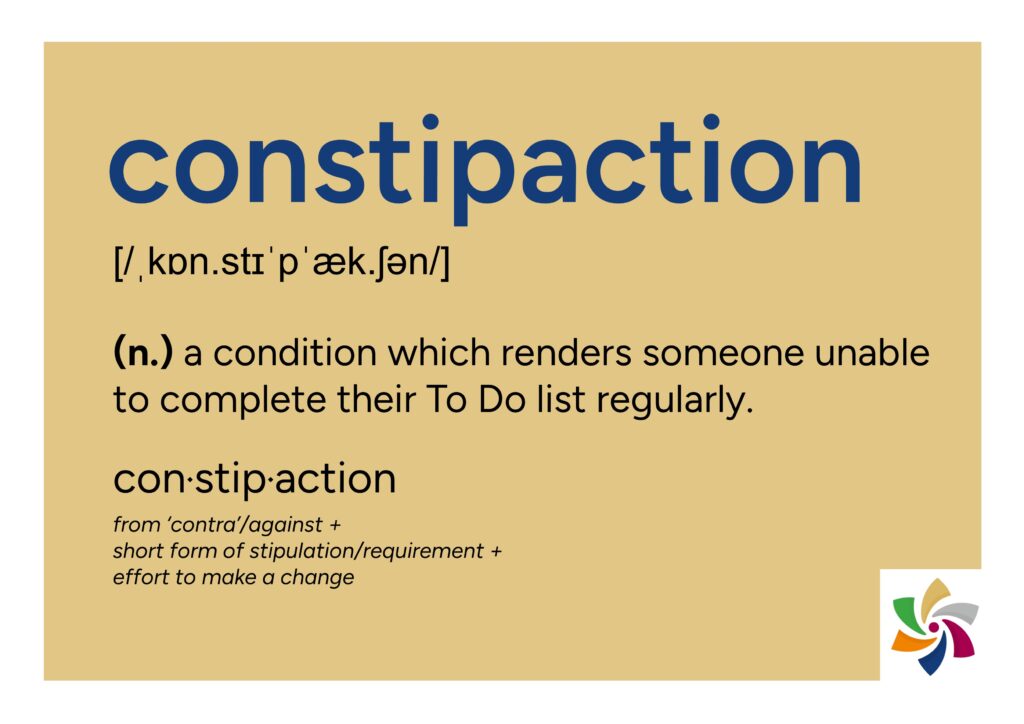Do you consciously consider how to use smart language to achieve your desired response?
Smart and savvy leaders lead by example, and your expectations are reflected in your language choices, especially in your business writing.
So, if your team or others you wish to motivate and impress are not responding as you expected, it may be because they misunderstand your messages. Or perhaps it takes them a while to understand what you mean and they need more time to decipher it.
It’s time to take responsibility for that confusion or delay.
For some leaders, moving away from an academic writing style conjures fears of sounding like a copywriter trying to market a dodgy deal or be pally in a way that doesn’t match the brand tone.
It is possible to communicate professionally and effectively, to assert authority and attract respect, using less formal language.
But before I share some SMART language strategies for savvy leaders, let’s look at why minding your language matters.
Firstly, remember the Mehrabian Principle?
- Words convey 7% of meaning
- Tone 38%
- Non-verbal cues 55%
The tone is more likely to be misinterpreted in a written message than a spoken one because the reader cannot supplement your words by recognising facial expressions, posture and vocal variations. That’s why attention to other non-verbal clues like layout, formatting and word choice makes such an impact on communication effectiveness and efficiency.
Secondly: time. When you assume responsibility for how long it could take your reader to understand your message, you and your reader will have more time to be productive with other tasks.
Making your messages easier and therefore faster to read saves your audience time and effort. They’ll thank you by responding more quickly in your favour.
Savvy leaders respect their readers’ time and provide sufficient detail to help them take the desired action.
When you use SMART language, your readers can:
- See what they need to know (easily, quickly)
- Understand what they read
- Use this knowledge to take the action that will meet their needs… and yours.
SMART language helps the writer:
- Improve response rates and outcomes
- Encounter fewer complaints and delays
- Be more productive with the time and effort saved
- Boost reputation and promotion prospects
- Support and enhance team performance
SMART language choices consciously aim to be Specific, Meaningful, Active, Reader-centric and Tone-sensitive.
Communicating what you need others to do to achieve a common goal using SMART language will reduce time, stress and risk… for you and them.
Specific
Be specific so they don’t have to keep coming back to you with questions. When your aim is to get a task done quickly, or that task is very important with a lot riding on its execution, sometimes using more words is actually what saves you time, stress and risk.
Specificity involves concrete words about (for example):
- Size
- Shape
- Colour
- Shade
- Make/Model
- Time – am/pm, hours/minutes/days
- Name
- Map coordinates
- Budget
If your text says: “I’ll pick you up tonight,” you’ll probably spend distracting time going back and forth with the details or driving around the block several times, focusing on the kerbside instead of the road.
“I’ll pick you up in a dark green SUV at 6 pm outside your hotel” is specific and clear. And time-saving.
How much detail depends on the context, your knowledge of the reader/s and your relationship with them.
Meaningful
Choose words that you and your audience use every day, i.e. your common language and shared meaning of terms.
If they have to look up a word or ask a colleague what it means, the response or action you want will take longer. If they misinterpret the meaning, make assumptions about it, the wrong action might be taken and that could be detrimental or even disastrous to what you want to achieve.
Who wins by using sophisticated phrasing? No one.
- Circumnavigation of the system in the redeployment of human assets is not commensurate with the overarching strategy.
- Moving people from one job to another without following the right process is not going to help us achieve our goals.
Which one did you understand first?
As well as taking more time to comprehend, such choices as the first one can make you sound pompous or patronising. Is that what you want your readers to think of you? Is it the attitude you want your people to emulate?
What’s more important: showing off your vocabulary range or making it easier and quicker for your reader to move from understanding to action?
Buzz words can be cute but also confusing, especially if your audience includes literal thinkers and native speakers of another language. If you say “It’s in the bag”, you might find someone rifling through your briefcase.
Metaphors can be very helpful for creating visual associations of complex concepts, but only when they clarify and amplify. If you have to explain the metaphor, you’ve made the wrong choice.
Perhaps your common language is jargonistic, a shorthand specific to your industry or team. However, while your vice-president might be familiar with company-wide acronyms and abbreviations, a client might use those same letter combinations differently in their business. It’s fine to use jargon if it is the common language for everyone involved. But it’s not if it’s not.
Active
Would you prefer to be known as an active or passive leader? How you phrase your words is a form of non-verbal communication.
Active language looks livelier. That’s because it has more verbs (“doing words”) than nouns (things). It communicates that you are actually doing stuff.
Active voice lets the actors act. They are in the spotlight.
Which version sounds less sluggish?
- The sales team met every monthly target in the first quarter.
- The monthly targets in the first quarter were met by the sales team.
The first has fewer words and is more direct and energetic.
Sentences and paragraphs with more nouns than verbs take longer to read – like taking bridal steps down the aisle instead of striding swiftly.
Compare these sentences:
- There is a Dispute Resolution Department which has the responsibility for the promotion of the development of dispute resolution services and for the provision of independent, responsive and effective assistance to individuals and groups that are engaged in the constructive resolution of conflict.
(43 words; 15 nouns; 4 verbs; 256 characters)
- The Dispute Resolution Department is responsible for promoting the development of dispute resolution services and providing independent, responsive and effective assistance to people engaged in constructive conflict resolution.
(28 words; 11 nouns; 4 verbs; 200 characters)
- The Dispute Resolution Department promotes the development of dispute resolution services and provides independent, responsive and effective aid to people engaged in constructive conflict resolution.
(25 words; 11 nouns; 3 verbs; 175 characters)
Adjectives describe the sensory aspects of an action or object, e.g. how it looks, feels, sounds, tastes or smells. Adverbs clarify how you want something done, e.g. promptly, smoothly, tactfully, quietly, assertively. Adding these extra words can reduce doubt about your expectations.
Use verb + adjective or adverb combinations instead of multiple nouns:
- Take care with making your decision. / Decide carefully.
- Ensure the smooth operation of the program. / Ensure the program operates smoothly.
- He used gestures to emphasise. / He gestured emphatically.
To check for passive voice, look for sentences beginning with “There is” and “There are”. Change the sentence structure so the sequence is subject-verb-object. Think “The cat sat on the mat” instead of “The mat was sat upon by the cat”.
To reduce your noun numbers, look for longer words that end in “ment” or “tion”. Shorter words like “of the” and “by” are usually beside them. Consider using the verb form of the word instead, e.g. manage/management, believe/belief, convey/conveyance, etc.
Tools that can help you reduce passive voice include Credosity, Grammarly, and that grey pop-up box that appears after you’ve run the in-built spell-checker.
Reader-centric
You know what you want from your written message, but why should your reader care? What’s in it for them? Why should they read it and take the action you ask for?
If the reader believes there’s a good reason to give time to your message (not just to keep their job), they’re more inclined to support your request (promptly).
Here are three ways to foster faith in the value of reading your emails, reports and proposals.
1. Say why
“Because” is a powerful word. If you explain early why reading your message will lead to benefits for them, for you, for the company or a cause, then they’ll be more motivated to read and take action.
Sharing your purpose is a transparency practice that builds trust.
2. Formatting
Make it easy for them. Don’t make them guess or click and then click and then click and then click or then scroll and scroll and scroll to find the critical details.
Use bullet points, spacing and bold type to help them scan quickly instead of feeling like they need a shovel to shift and sift.
3. Proofread
Check that you have spelled names of people, products and companies correctly before printing/sending/posting. Not getting these details right can trigger doubt about your level of respect and professionalism. Is it reasonable to expect Stephanie to read on and respond enthusiastically when you address her as Stephan?
Deciphering spelling errors, misplaced punctuation and unusual capitalisation slows reading. The harder you make it to read, the longer it takes for the reader to understand your message and figure out what action they should take. They might give up or their annoyance may influence their response.
Tone-sensitive
“It’s not what you said, it’s how you said it.” That’s tone – the 38 percent factor in Mehrabian’s communication equation. The readers’ interpretation of your tone influences how they respond to you.
Tone tells how…
- the writer feels
- the writer wants the reader to feel
- much the writer cares
- much the writer respects the reader and the situation
Tone is conveyed by the…
- channel
- language
- amount of help the writer gives the reader
Compare the following examples. Which one do you think is more likely to receive a positive and prompt response?
- An application for personal leave from you was received by the HR Department but it cannot be processed because you did not sign both pages and it was signed with a pencil. Sign and submit the form again otherwise it will not be processed. Do not use blue ink or pencil.
- HR received your personal leave application but there’s another step before it can be processed. As your signature is required on both pages, please sign the enclosed form in the flagged places and return it to us. Remember to use a pen with black ink so the application can be completed successfully.
Draw on all the strategies in this article to hone your tone. Take the time to check that your tone is appropriate for the situation and the relationship with your readers.
Smart language, i.e. conscious choices, save time for you – not waiting for a response while the reader is walking around the block cooling off; and for your readers – not being distracted by wondering if they have misunderstood, done something wrong, or should start looking for leadership elsewhere.
Would you like your team to learn smart writing strategies? Check out these training options then
Tap back to Communisence for more practical tips




